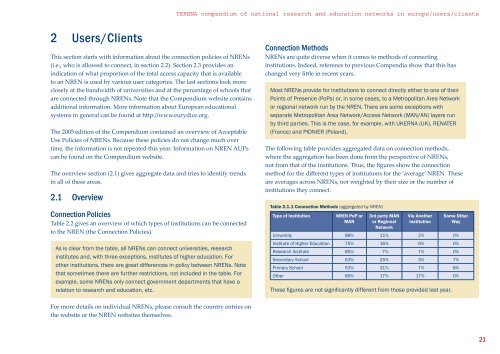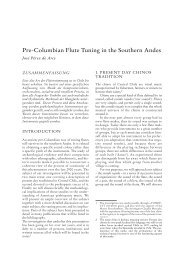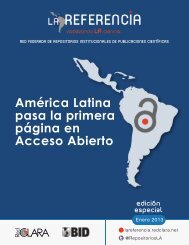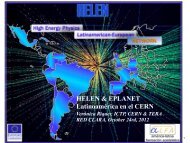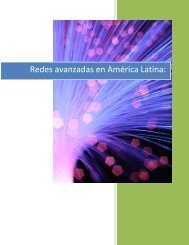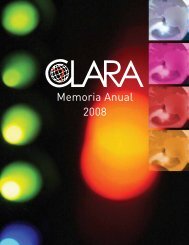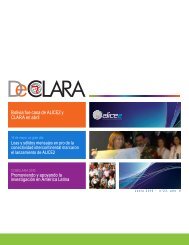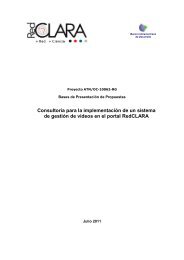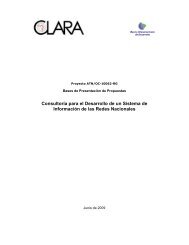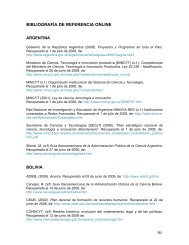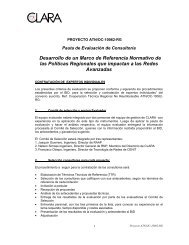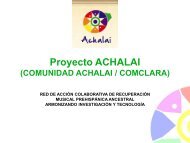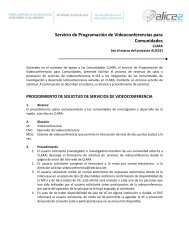full PDF version (2.1 MB) - Terena
full PDF version (2.1 MB) - Terena
full PDF version (2.1 MB) - Terena
- No tags were found...
Create successful ePaper yourself
Turn your PDF publications into a flip-book with our unique Google optimized e-Paper software.
TERENA compendium of national research and education networks in europe/users/clients2 Users/ClientsThis section starts with information about the connection policies of NRENs(i.e., who is allowed to connect, in section 2.2). Section 2.3 provides anindication of what proportion of the total access capacity that is availableto an NREN is used by various user categories. The last sections look moreclosely at the bandwidth of universities and at the percentage of schools thatare connected through NRENs. Note that the Compendium website containsadditional information. More information about European educationalsystems in general can be found at hp://www.eurydice.org.The 2005 edition of the Compendium contained an overview of AcceptableUse Policies of NRENs. Because these policies do not change much overtime, the information is not repeated this year. Information on NREN AUPscan be found on the Compendium website.The overview section (<strong>2.1</strong>) gives aggregate data and tries to identify trendsin all of these areas.<strong>2.1</strong> OverviewConnection PoliciesTable 2.2 gives an overview of which types of institutions can be connectedto the NREN (the Connection Policies).As is clear from the table, all NRENs can connect universities, researchinstitutes and, with three exceptions, institutes of higher education. Forother institutions, there are great differences in policy between NRENs. Notethat sometimes there are further restrictions, not included in the table. Forexample, some NRENs only connect government departments that have arelation to research and education, etc.Connection MethodsNRENs are quite diverse when it comes to methods of connectinginstitutions. Indeed, reference to previous Compendia show that this haschanged very lile in recent years.Most NRENs provide for institutions to connect directly either to one of theirPoints of Presence (PoPs) or, in some cases, to a Metropolitan Area Networkor regional network run by the NREN. There are some exceptions withseparate Metropolitan Area Network/Access Network (MAN/AN) layers runby third parties. This is the case, for example, with UKERNA (UK), RENATER(France) and PIONIER (Poland).The following table provides aggregated data on connection methods,where the aggregation has been done from the perspective of NRENs,not from that of the institutions. Thus, the figures show the connectionmethod for the different types of institutions for the ‘average’ NREN. Theseare averages across NRENs, not weighted by their size or the number ofinstitutions they connect.Table <strong>2.1</strong>.1 Connection Methods (aggregated by NREN)Type of InstitutionNREN PoP orMAN3rd party MANor RegionalNetworkVia AnotherInstitutionSome OtherWayUniversity 88% 11% 2% 0%Institute of Higher Education 75% 16% 9% 0%Research Institute 85% 7% 7% 0%Secondary School 53% 25% 3% 7%Primary School 53% 31% 7% 8%Other 66% 17% 17% 0%These figures are not significantly different from those provided last year.For more details on individual NRENs, please consult the country entries onthe website or the NREN websites themselves.21


